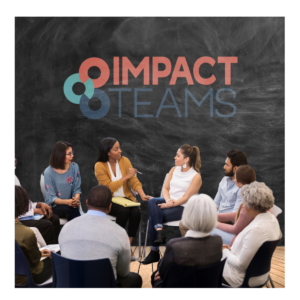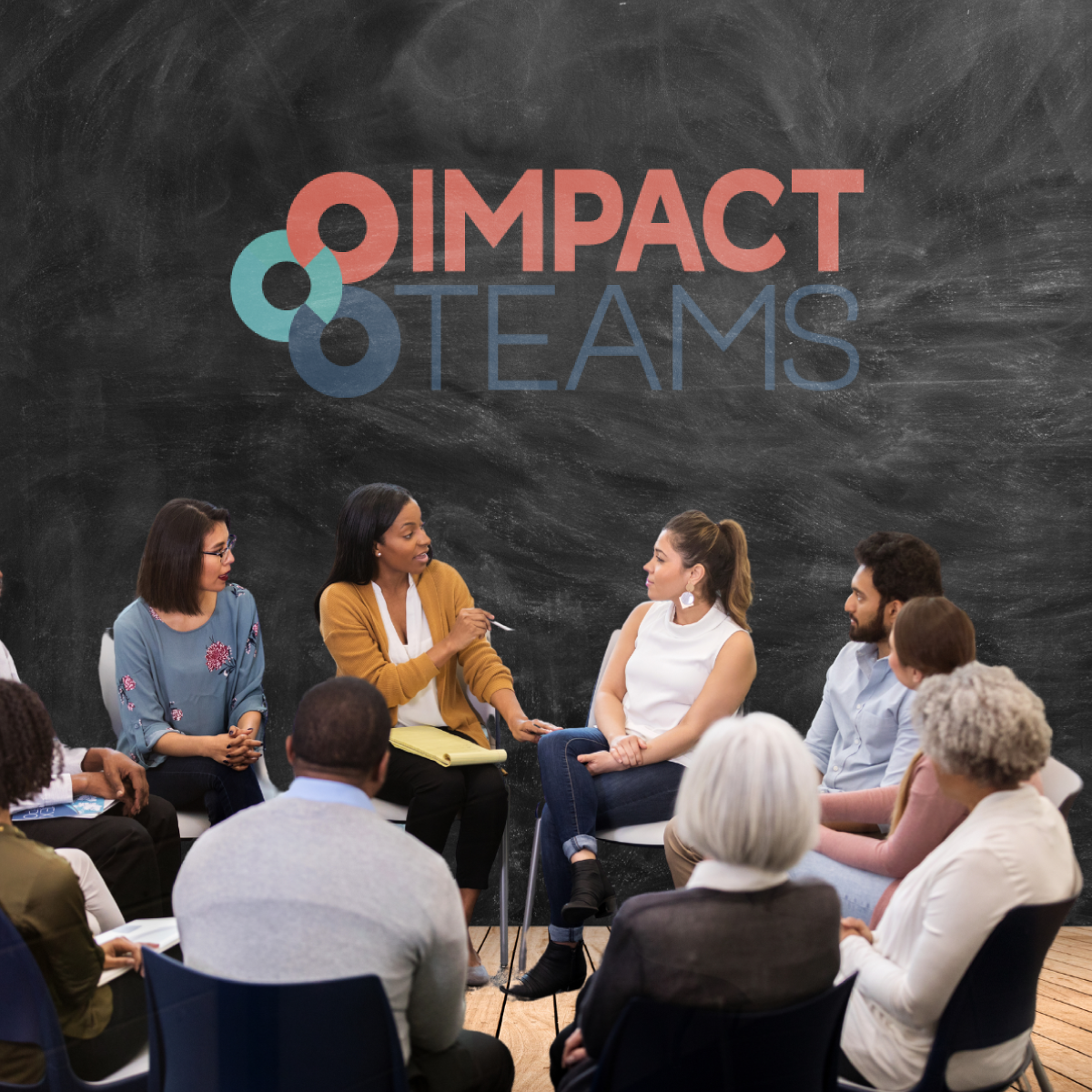Facilitating an Impact Team-PLC or ILT is more than guiding conversations—it’s about cultivating a space where creativity thrives, decisions are shared, and the strengths of every team member are amplified. Through asset-based facilitation, leaders can harness the collective wisdom and talents of the group to foster true innovation. Here are the facilitation moves that empower shared decision-making and elevate collaboration to new heights.
By embracing asset-based facilitation, we move beyond simply solving problems and step into a space where strengths are amplified, ideas flourish, and collective action drives real change.
1. Strengths Mapping
- Move: Begin by mapping the strengths of each PLC member. During the first meeting, ask everyone to share a skill or experience they bring to the group.
- Why It Works: This creates a foundation of trust and collaboration by acknowledging the expertise within the room. It also encourages members to see themselves as contributors rather than recipients of knowledge.
- Example: “Let’s take a few minutes to identify a skill or strength we each bring to our work with students. This will help us understand how we can best complement one another in our collaboration.”
2. Structured Round-Robin Sharing
- Move: Utilize a structured round-robin process to ensure each member has an equal voice in discussions. Give each person a specific amount of time to share their insights before moving on to the next.
- Why It Works: This move levels the playing field and ensures that all perspectives, especially quieter voices, are heard. It also reinforces equity in decision-making.
- Example: “Let’s go around the circle; everyone can share one idea they think would benefit our students. We’ll each have two minutes, and after everyone has shared, we’ll begin discussing the ideas collectively.”
3. Consensus Building Through Dot Voting
- Move: When multiple ideas are on the table, use dot voting to visually represent which ideas have the most group support. Each member is given a set number of dots (votes) they can place on ideas they find most valuable.
- Why It Works: This process is transparent, efficient, and ensures that every member’s input is considered. It helps the group arrive at a consensus without silencing minority voices.
- Example: “We have six potential strategies. Let’s use our dot votes to determine the group’s priorities. Each of you has three dots to place on the strategies you feel have the most potential for impact.”
4. Asset-Based Questioning
- Move: Frame questions in ways that focus on assets rather than deficits. When faced with a challenge, ask questions like, “What are we already doing well that we can build on?”
- Why It Works: Asset-based questioning shifts the focus from what is lacking to what is already working, helping teams see possibilities and solutions rather than problems.
- Example: “Before we discuss challenges, let’s first identify what’s working. What strengths can we leverage as we plan to improve student engagement?”
 5. Fishbowl Protocol
5. Fishbowl Protocol
- Move: Use a fishbowl protocol where a few members discuss a topic while the rest of the team listens and observes. After the discussion, the observers provide feedback on what they noticed.
- Why It Works: This move allows for deeper reflection and shared decision-making. It encourages active listening and gives space for innovation to emerge through dialogue.
- Example: “Let’s try the fishbowl protocol for this next discussion. Three of you will talk about your experiences implementing culturally responsive assessment, while the rest of us observe and take notes on the strategies and challenges you share.”
6. Success Case Storytelling
- Move: Invite members to share specific success stories related to the topic of discussion. Have them explain what led to the success and how it can inform the team’s next steps.
- Why It Works: Storytelling highlights real-world applications of successful strategies, focusing on what works and why. It taps into the collective wisdom of the group and creates a positive, forward-thinking mindset.
- Example: “Let’s take a few minutes for success case storytelling. Think of a time when you successfully implemented an innovative teaching strategy. How did you go about it, and what can we learn from your experience?”
7. Jigsaw Method for Collaborative Learning
- Move: Use the jigsaw method where each member is responsible for becoming an expert on one part of the topic. They then share their expertise with the rest of the group.
- Why It Works: This method promotes shared responsibility, mutual learning, and innovation. Each member has the opportunity to teach and learn from others, ensuring that diverse perspectives are incorporated.
- Example: “We’re going to split into groups to research different aspects of competency-based learning. Each group will become experts on one part of the process, and then we’ll come back together to share what we’ve learned.”
8. Affinity Mapping
- Move: Have the team brainstorm ideas individually and then use an affinity mapping technique to group similar ideas together. This helps identify common themes and patterns.
- Why It Works: Affinity mapping encourages creativity while ensuring that all voices contribute to the discussion. It promotes innovation by organizing ideas in a way that reveals shared priorities.
- Example: “Let’s spend 10 minutes brainstorming strategies for advancing student agency. Afterward, we’ll group our ideas by theme and see where the strongest connections lie.”
9. Equity Pauses
- Move: During decision-making, intentionally pause and reflect on how decisions impact all student populations, particularly marginalized groups. Ask reflective questions like, “Who is benefiting from this decision? Who might we be leaving out?”
- Why It Works: Equity pauses ensure that decisions are inclusive and consider the needs of all students. This move builds an inclusive culture in the PLC and drives innovative thinking focused on equity.
- Example: “Before we finalize this strategy, let’s take an equity pause. How will this approach impact students who are historically underserved? Are there adjustments we should make?”
10. Future-Proofing
- Move: Once decisions are made, engage the group in future-proofing by asking them to think about how the decision will hold up over time and in different contexts.
- Why It Works: Future-proofing ensures that decisions are sustainable and adaptable to future challenges. It promotes innovation by encouraging the group to think beyond the present moment.
- Example: “We’ve agreed on this strategy, but let’s future-proof it. How will this decision hold up in two or three years? What changes in the educational landscape might require us to adjust?”
Fostering Innovation and Inclusivity in Learning Teams
By embracing asset-based facilitation, we move beyond simply solving problems and step into a space where strengths are amplified, ideas flourish, and collective action drives real change. As facilitators, you hold the power to create an environment where every voice is valued, and every team member contributes to the growth of the whole. Let’s challenge ourselves to lean into this approach—building a culture of shared decision-making that not only empowers educators but also ignites the potential in every student we serve. The future of our classrooms depends on it. Are you ready to lead the way?
Sources:
Paul J Bloomberg; Best Selling Author, Leading Impact Teams
Brookfield, S. D., & Preskill, S. (1999). Discussion as a Way of Teaching: Tools and Techniques for Democratic Classrooms.
Costa, A. L., & Kallick, B. (2008). Learning and Leading with Habits of Mind.
Lipmanowicz, H., & McCandless, K. (2013). The Surprising Power of Liberating Structures.
Senge, P. M. (2006). The Fifth Discipline: The Art and Practice of the Learning Organization.
Tschannen-Moran, M., & Barr, M. (2004). Fostering Teacher Professionalism in Schools: The Role of Leadership Orientation.



